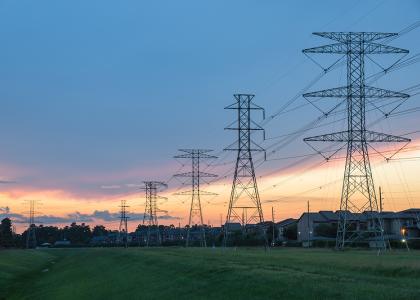As much of the United States continues to suffer from drought and extreme heat, five states have adopted energy- and water-saving appliance standards since late March, a rapid series of victories for consumers, businesses, and the climate. The new state laws in Maine, Massachusetts, Nevada, Oregon, and Rhode Island will require minimum energy- and water-use efficiency levels for more than 15 types of products including air purifiers, computers, and restaurant equipment. The standards will reduce utility bills and carbon dioxide emissions, bringing each state closer to meeting their climate goals.
This year’s momentum builds on other recent victories, with 11 jurisdictions in total—also including California, Colorado, District of Columbia, Hawaii, Vermont, and Washington—adopting standards since 2018. And legislation is still pending in New Jersey and Pennsylvania. Despite this progress, more states need to cut emissions and pave the path for new national standards that deliver even larger reductions in climate-warming emissions.
State and federal standards work in concert
Historically, state standards have been the impetus for federal action. Standards for most of the roughly 60 products regulated at the federal level started out in the states. While states take the lead in creating standards for products that are not yet included in the federal program, the U.S. Department of Energy (DOE) is working to catch up on a backlog of reviews of existing federal standards inherited from the prior administration to make sure they are keeping pace with efficiency improvements.
In most cases, the new state standards require a minimum amount of water or energy efficiency for products that have no federal standard. The exceptions have been several water-using products, such as faucets and showerheads, where DOE granted states permission years ago to set stronger standards than the federal ones.
More-efficient equipment in homes and businesses
This year marks several firsts. Massachusetts adopted the first standards for electric vehicle chargers, a critical step as vehicle charging is expected to grow rapidly in the coming years. Nevada was the first state to adopt standards for gas fireplaces and air purifiers (the District of Columbia adopted air purifier standards in December 2020). As the air purifier market grows quickly in response to wildfires and the COVID-19 pandemic, it’s important that consumers have access to efficient products.
Oregon became the second state, after Washington, to adopt a standard for grid-enabled water heaters. The standard requires electric water heaters to be able to automatically adjust their power usage in response to changes in electricity prices or the needs of the power grid. This feature will allow utilities to scale up valuable demand response programs, which can save consumers money, reduce the need to operate polluting peaker power plants, and potentially prevent dangerous blackouts. Nevada legislators authorized their state energy office to adopt similar grid-enabled standards for energy-intensive appliances like air conditioners and water heaters.
We estimate that the combined standards will save residents of the five states $470 million on their utility bills annually by 2035 and cut cumulative greenhouse gas emissions through 2035 by 4.3 million metric tons—an amount equivalent to removing 935,000 cars from the road for a year. The standards will also save nearly 16 billion gallons of water annually by 2035.
Standards for products such as faucets or lawn spray sprinklers are especially important for drought-prone states, particularly in the west. California, Colorado, Nevada, Oregon, and Washington have already adopted standards for a handful of water-using products. Other western states that face similar challenges, such as Utah and Arizona, have not yet set such standards. However, time is of the essence. Bold leadership is needed as droughts are certain to worsen. Fortunately, state legislatures looking for new ways to combat water shortages, save residents money, and reduce greenhouse gas emissions can do so with efficiency standards.
Tackle climate emissions with state and federal progress
But state-based initiatives alone are not sufficient. We need national momentum. The good news is that when numerous states make progress, it creates momentum for federal standards. Carbon emissions will decrease faster as states and DOE continue to work on parallel tracks to adopt new and updated efficiency standards. This is why state leadership on energy efficiency standards has never been more important.


